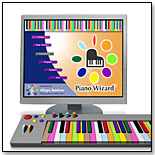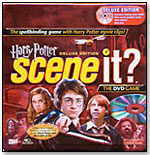
April 19, 2024


| “I like good specialty retailers, and I do think that they can move merchandise ... Without them, most un-promoted product would have no chance at all.” — Joe Wetherell, inventor |
But finding that one-in-a-million before anyone else can lead to a goldmine. TDmonthly Magazine interviewed long-time toy inventor Joe Wetherell to get an originator’s thoughts on the status of the industry and his pointers on where “the next big thing” may come from.
Wetherell was not impressed with anything in particular after visiting this year’s American International Toy Fair in New York City. “Unfortunately, I could not find many major innovations,” he said. “The most viable market seems to be preschool. My personal favorite was a system for teaching piano to preschoolers manufactured by Fisher-Price (I Can Play Piano). There’s a bewildering maze of electronic preschool toys out there. I believe that every child above 3 can now count to 10 and recite the alphabet. Maybe a new product could be developed to teach them 11 to 20.”
When asked where other trends may come from, Wetherell responded, “I see increasing sophistication in electronics in all categories. Speech, video displays and movement have made it almost imperative that all products be self-demo in the store. Sometimes, this has led to the increasing development of robotic, ‘watch-me’ toys. I think that this trend will continue.”
In addition, he said the nation’s growing interest in reality television will continue to give rise to hands-on products such as Screenlife’s “Scene It?” In addition, “for better or worse,” America’s fascination with celebrity and notoriety will filter down to toys and games, Wetherell predicts.
Wetherell believes that most toys need major distribution to succeed. “There are always a couple of small companies that either have a process or product that is truly interesting and novel, but I think that their only hope is that they can license their product to a major company,” he said.
Yet, he recognizes a need and avenue with boutique and specialty retailers as well. “I like good specialty retailers, and I do think that they can move merchandise. There are still some people running specialty stores and small businesses that have taste and knowledge and can personally assist customers in making purchasing decisions. They also have more patience in waiting for a product to become popular. Without them, most un-promoted product would have no chance at all.”
Despite his somewhat negative view, he believes there is hope for the toy industry. Having worked as an independent inventor for the past 50 years, he still sees opportunities.
“My advice to both inventors and manufacturers is to have passion about your ideas and enjoy the process of bringing them to reality. Success is great, if it happens, but enjoying the process is the most important reason for being in this business,” he said. “There is nothing I enjoy more than seeing a great item and saying, ‘I wish that I had thought of that.’ I hope that happens more often.”
What follows is more information on a couple of products mentioned within this article’s text.
I Can Play Piano by FISHER-PRICE INC. Each I Can Play Piano comes with 1 AC adaptor and 1 song-and-game cartridge. Additional song-and-game cartridges are sold for $14.99 each. The three-octave piano keyboard plugs into the television to create a plug-and-play piano system. Color-coded keys are the perfect size for small hands. The keyboard can also be used for take-along play. The “learning magic” lies within the proprietary Piano Wizard technology in the song-and-game cartridges, turning standard sheet music into a colorful game with fun, moving images that tell kids what note to play and when to play it. I Can Play Piano is easy because kids set the tempo and learn at their own pace. Another great bonus is that kids of different ages (even Mom!) can collaborate and play together, and the simple game becomes a fun family experience. Each time kids play, they’ll get a score and visual feedback on how well they played, just like playing a video game. The better they play, the higher their score, with positive feedback and unconditional applause to encourage them every step of the way. 3/30/2006 (MSRP: $79.99; Age: 4 to 8)
Each I Can Play Piano comes with 1 AC adaptor and 1 song-and-game cartridge. Additional song-and-game cartridges are sold for $14.99 each. The three-octave piano keyboard plugs into the television to create a plug-and-play piano system. Color-coded keys are the perfect size for small hands. The keyboard can also be used for take-along play. The “learning magic” lies within the proprietary Piano Wizard technology in the song-and-game cartridges, turning standard sheet music into a colorful game with fun, moving images that tell kids what note to play and when to play it. I Can Play Piano is easy because kids set the tempo and learn at their own pace. Another great bonus is that kids of different ages (even Mom!) can collaborate and play together, and the simple game becomes a fun family experience. Each time kids play, they’ll get a score and visual feedback on how well they played, just like playing a video game. The better they play, the higher their score, with positive feedback and unconditional applause to encourage them every step of the way. 3/30/2006 (MSRP: $79.99; Age: 4 to 8)
Harry Potter Scene It? Deluxe Edition by SCREENLIFE Test your knowledge of one of the world´s most famous wizards with movie clips, puzzlers and questions based on the first three Harry Potter movies, including bonus content from "Harry Potter and the Goblet of Fire." How much do you really know about Quidditch, Transfiguration or the Dark Arts? You'll find out as you race your friends around the game board. (
Test your knowledge of one of the world´s most famous wizards with movie clips, puzzlers and questions based on the first three Harry Potter movies, including bonus content from "Harry Potter and the Goblet of Fire." How much do you really know about Quidditch, Transfiguration or the Dark Arts? You'll find out as you race your friends around the game board. (![]() Watch Video) 9/13/2005 (MSRP: $49.99; Age: 8 and Up)
Watch Video) 9/13/2005 (MSRP: $49.99; Age: 8 and Up)
Copyright © 2024 TDmonthly®, a division of TOYDIRECTORY.com®,
Inc.